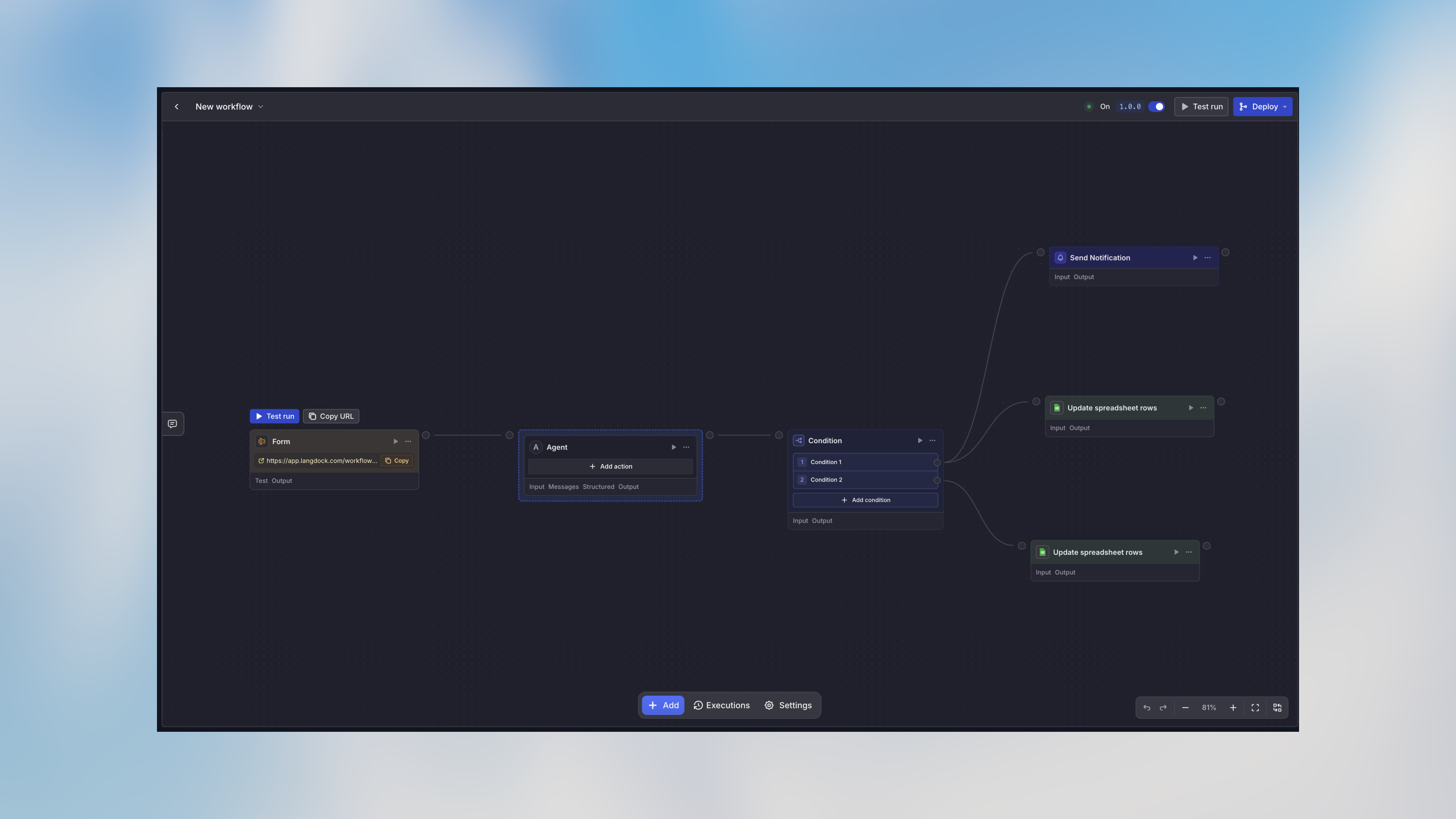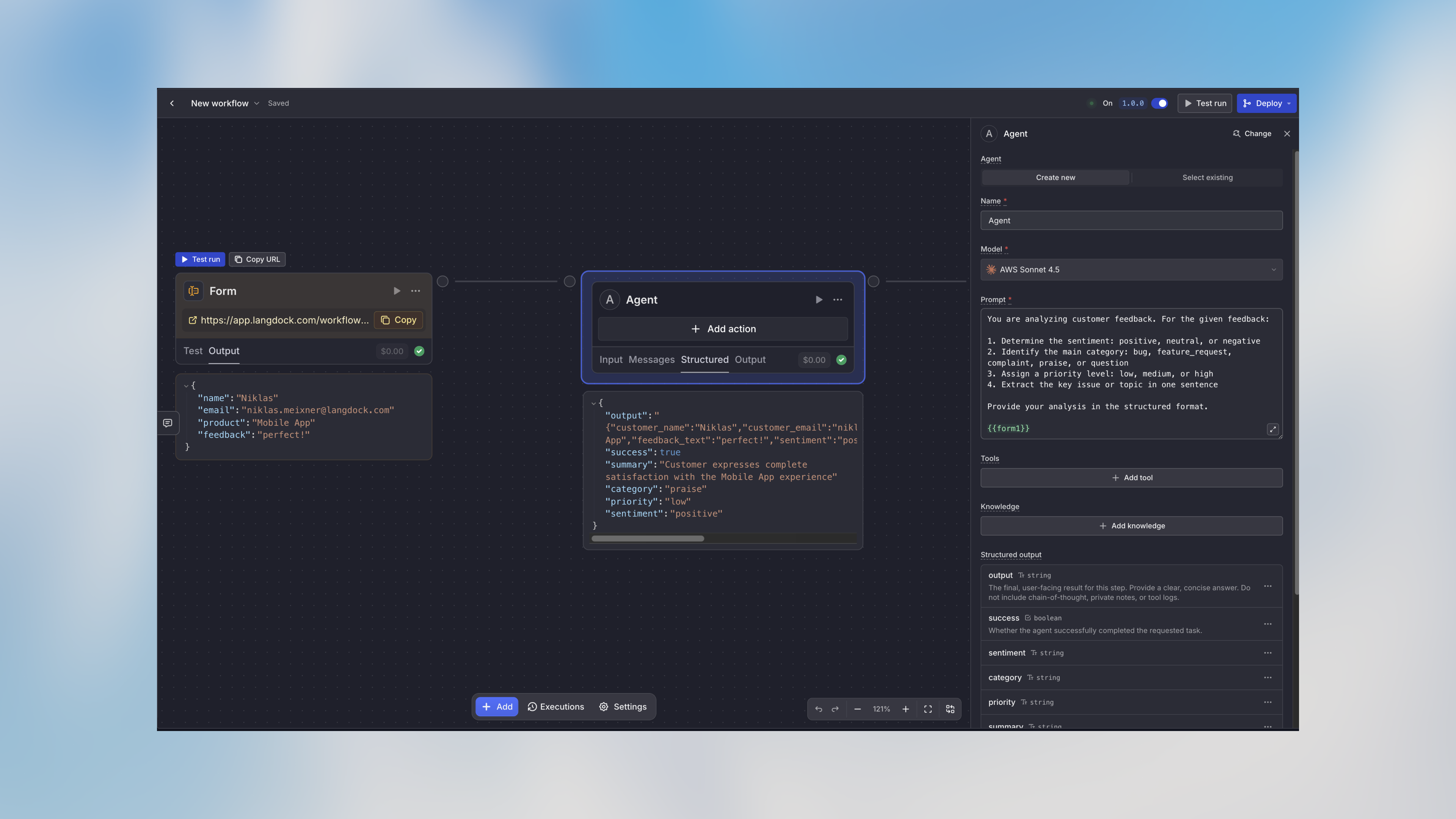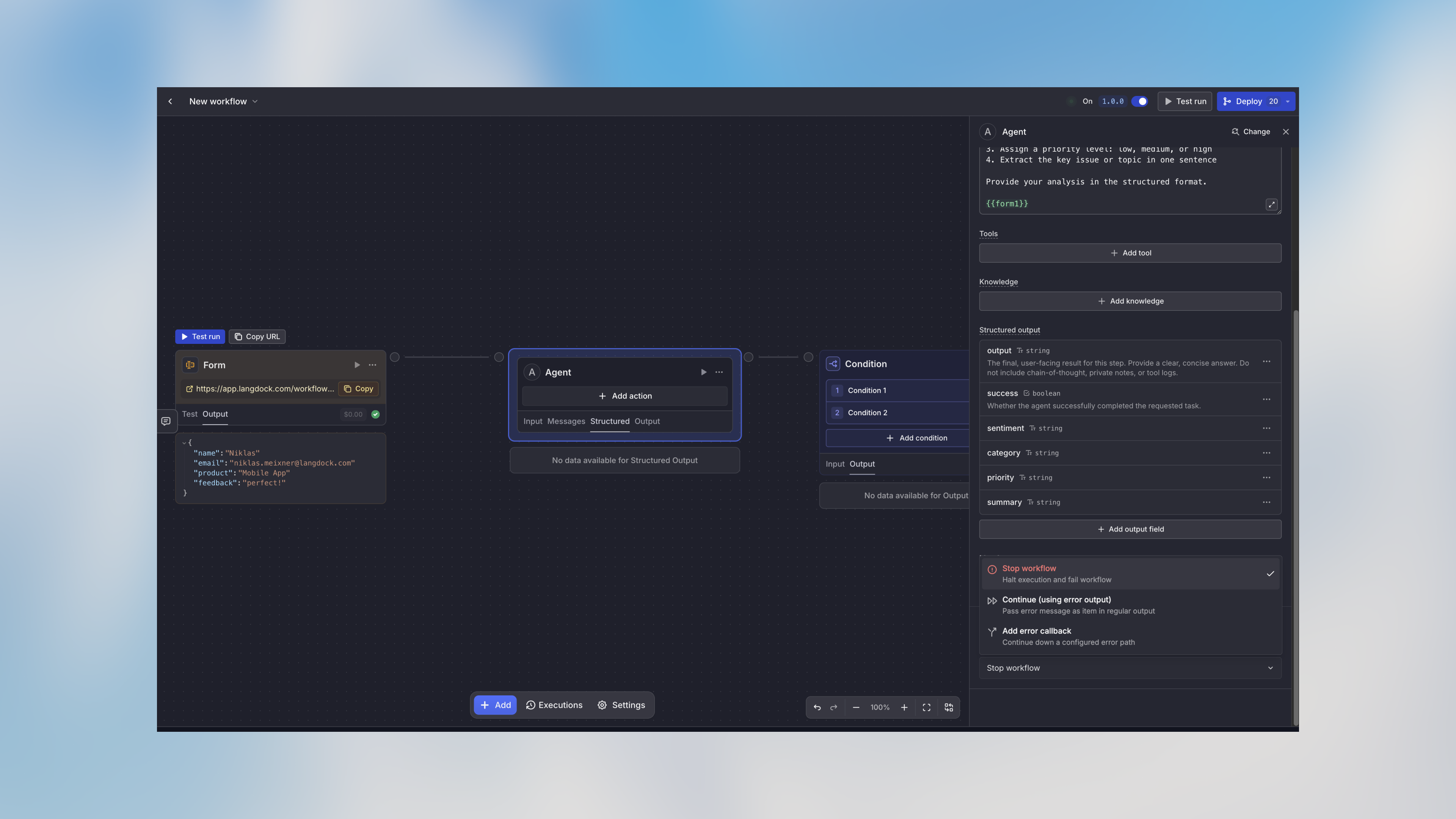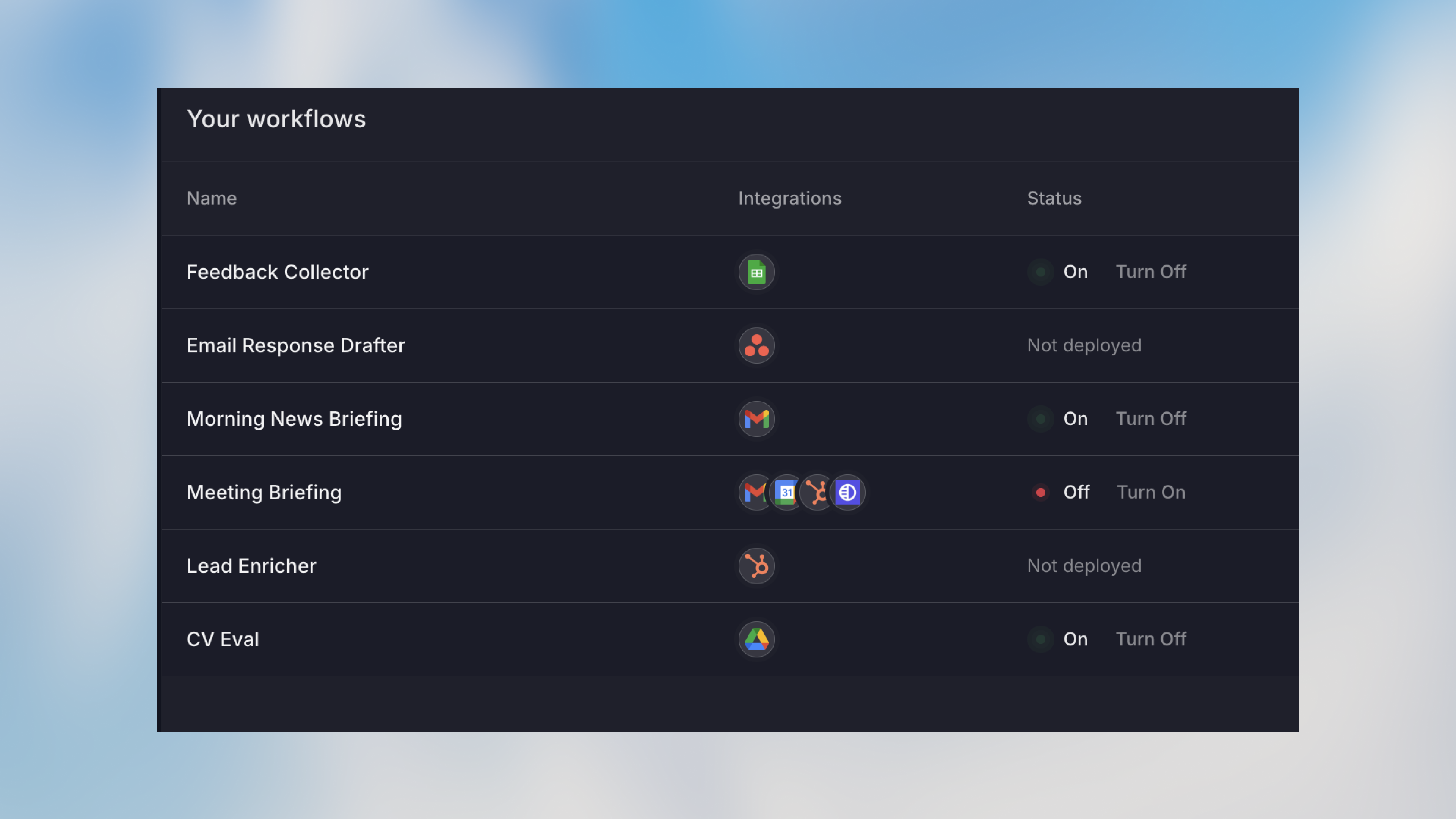Introduction
Welcome to Workflows fundamentals. This guide covers everything you need to understand how workflows work - from individual nodes to execution patterns, versioning, and testing strategies.What is a Node?
A node is the fundamental building block of a workflow. Think of it like a step in a recipe - each node does one thing, and you chain them together to create your complete automation. Nodes can do all sorts of things:- Execute AI agents to analyze or generate content
- Make HTTP requests to external APIs
- Transform data with custom code
- Route execution based on conditions
- Send notifications to team members
Visual Programming: Workflows use a visual canvas where you drag, drop,
and connect nodes. No coding required (unless you want to use a Code node)!

Understanding Node Structure
Every node has a few common elements that make them easy to work with:The Node Header
Shows you the node type and name. Click the play button here to test the node individually - super helpful for debugging!Input and Output Tabs
After a node runs, you can click on it to see:- Input tab: What data the node received
- Output tab: What data the node produced
Configuration Panel
Click any node to open its settings in the side panel. This is where you configure what the node does, select AI models, set up connections to external services, and more.
Working with Variables
Data flows through variables. When a node finishes running, its output
becomes available as a variable that you can use in later nodes. This is how
information moves through your workflow.
The Basics
Use double curly braces to reference variables:Configuring Fields with Variables
Every node has fields that need configuration. You can use variables in most text fields, or choose from three field modes:- Auto Mode: Let the workflow automatically determine the best value
- Manual Mode: Enter exact values or use variables like
{{form1.output.email}} - AI Prompt Mode: Give instructions for AI to generate dynamic content
Learn About Field Modes
Understand Auto, Manual, and AI Prompt modes and when to use each one
{{ in any field, you’ll see a dropdown showing all available variables from previous nodes.
How Workflows Execute
Understanding execution is key. Workflows can run nodes sequentially (one
after another) or in parallel (simultaneously). Knowing how execution works
helps you build faster, more efficient automations.
Sequential Execution
By default, your workflow runs nodes one after another, following the connections you’ve drawn. Each node waits for the previous one to complete before starting. Simple and predictable!Parallel Execution
When you connect multiple nodes to a single source node, they can run at the same time. This speeds up your workflow when nodes don’t depend on each other. For example:
Error Handling
You control what happens when something goes wrong. For each node, you can choose:- Fail workflow: Stop everything and mark the run as failed (good for critical steps)
- Continue workflow: Log the error but keep going (good for non-critical actions)
- Error callback: Route to different nodes on error using the red error handle (good for fallback logic)

Workflow Versions
Version control for workflows. Every workflow has versions, similar to Git
for code. This keeps production stable while you make changes safely in draft
mode.
Draft Version (v0)
This is your sandbox. Make changes, test things out, and experiment without affecting anything in production. The draft version is always labeled v0.Published Versions
When you’re happy with your changes, publish them to create a new version (v1.0.0, v1.1.0, etc.). Published versions are:- Immutable: They can’t be changed, which keeps production stable
- Activated for triggers: Only active published versions respond to real triggers
- Documented: Each includes a description of what changed
- Rollback-ready: You can reactivate an older version if needed
- Patch (1.0.0 → 1.0.1): Bug fixes and small tweaks
- Minor (1.0.0 → 1.1.0): New features or nodes
- Major (1.0.0 → 2.0.0): Breaking changes
Testing Your Workflow
Test early, test often. Don’t wait until your workflow is complete to
start testing. Test each node as you build it to catch issues early.
Testing Individual Nodes
Click the play button on any node to test just that piece. This is great for:- Verifying an agent’s output before building the rest of the workflow
- Checking if an API call returns the expected data
- Debugging issues in specific nodes
Testing Complete Workflows
Use the “Test run” button on the trigger node to execute the entire workflow with sample data. This runs through all nodes but doesn’t mark events as processed, so you can test safely.Viewing Results
After any test run, click on nodes to see:- Input: What data the node received
- Output: What it produced
- Messages: For agent nodes, the full AI conversation
- Logs: For code nodes, any console output
- Usage: How many AI credits were consumed
Connections Between Nodes
Connections define flow. The lines between nodes aren’t just visual - they
determine the order of execution and how data flows through your workflow.
Connection Handles
Nodes have connection points (handles) on their sides:- Left side (input): Where execution flows in
- Right side (output): Where execution flows out
- Multiple outputs: Condition nodes have one output per condition
- Red handle: Special error output (appears when error handling is enabled)
Drawing Connections
Click and drag from an output handle to an input handle. The line shows the execution flow. Workflows execute in the order defined by these connections.Workflow Status
Your workflow can be in one of three states:- Not deployed
- On
- Off
Still being built - no automatic triggers fire. Safe for making changes and
testing.

Human Oversight
For sensitive actions like financial transactions or data deletions, you can require manual approval before proceeding:Human in the Loop
Add manual approval steps for important actions requiring human oversight
Best Practices
- Give nodes clear names: “Analyze feedback” not “Agent 1”
- Keep workflows focused: One workflow, one purpose
- Test early and often: Test each node as you build
- Add comments: Document complex logic for your future self